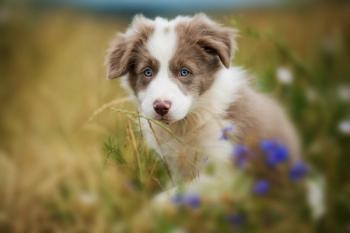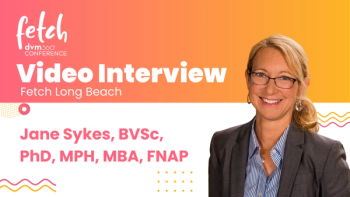
Vets take the stage in new reality series
National Report - There is a new group of reality stars, and they spend most of their time surrounded by cattle, pigs and horses.
NATIONAL REPORT — There is a new group of reality stars, and they spend most of their time surrounded by cattle, pigs and horses. Season one of "Veterinarians on Call"—
"The feedback has been very positive, and the show has very much exceeded our expectations," says Clint Lewis, president of U.S. operations for Pfizer Animal Health, the organization funding the project. "The webisodes give us the opportunity to tell the story to the public about where food comes from and the great care veterinarians provide. As people move farther away from the farm, it's good for them to see what's going on. I think there is a great story to tell."
The series follows five livestock veterinarians from Texas, Minnesota, Iowa and New York as they go about their daily routines.
Filming began in November 2010, says producer/creator John Courtmanche of Essex Television.
"We decided that the vet profession was a good topic for a documentary video series like some of the reality series out there now like (History Channel's) "Ice Road Truckers" and "Deadliest Catch" (on the Discovery Channel)."
Courtmanche says they followed each veterinarian for one to two days.
"It was fascinating. I've never been on farms like these," he says. "They gave us open access to their work and also their clients gave us access to their farms."
First up, Dr. Don Goodman
Dr. Don Goodman, with the Beard-Navasota Veterinary Hospital in Navasota, Texas, spends most of his days out in the field focusing primarily on beef cattle.
"One of my clients has a herd of 3,000. Everything's bigger in Texas," he says.
When a colleague asked Goodman if he would be interested in participating in the "Veterinarians on Call" series he said he would do it as long as the film crew was comfortable around animals.
"It can be dangerous," Goodman says, adding he also wanted to show the public the positive side of the food-animal industry. "We try to treat animals on an individual basis even though they're in herds," he says.
With four veterinarians on staff for a 50- to 60-mile practice area, Goodman says the only thing typical about a day is that it is atypical.
"We have scheduled appointments, but there can be a prolapse or other emergencies that come," he says. "That's one of the things that I like in the large-animal field. It's never the same things."
Goodman says the job satisfaction and the good, positive vibes he gets from clients more than make up for the long hours, nights and weekends.
"I like the relationships we build and the friends I've made," he says.
As for his new stardom, Goodman says he was pleased after watching his webisodes.
"It was definitely a realistic portrayal. It's the real deal. I didn't mind it at all," he says. "I'd do it again, but I wouldn't be so serious this time."
Dr. Ross Kiehne
Dr. Ross Kiehne, of the Swine Vet Center in St. Peter, Minn., spends his days surrounded by pigs.
A graduate of the College of Veterinary Medicine at the University of Minnesota, Kiehne says he always wanted to work in the agricultural sector or a rural community. He decided during college to be a veterinarian, and after growing up on a farm with pigs, beef and dairy cows, focusing on pigs was an easy choice.
The 11 veterinarians on staff at the Swine Vet Center see about 350,000 sows, Kiehne says.
"We're in barns every day. We look at the pigs and evaluate what needs to happen. If there are health or production problems, we need to figure out what needs to happen next."
Kiehne's motivation to do the series was simple.
"I want to get the word out about swine veterinarians and pork producers," he says. "I'm proud of how pigs are being raised. Most people can't see that so this is one way to show them."
After two and a half days with the film crew, Kiehne wants consumers to understand how much pig producers care about their animals and how the swine vets support that.
Dr. Paul Ruen
Swine veterinarian Paul Ruen developed a greater interest in pigs after a part-time job in the swine department during veterinary school.
"By my senior year I was quite focused on a career in swine medicine," he says.
A partner at the Fairmont Veterinary Clinic in Fairmont, Minn., Ruen says 95 percent of their work is with pigs and 5 percent with beef cattle on farms in Minnesota and Iowa.
He said the nine veterinarians on staff work with specific clients but help each other when emergencies pop up.
"My typical day includes spending the morning at a breeding (sow) site and the afternoon at wean-finish sites," he says. "I enjoy seeing the improvements in health and production that can come from a team of people working toward the same goals. I am dealing with animals and biology, not machines, so there are dynamics and unpredictability that create challenges out on the farm."
While Ruen admits it took a little while to get used to being filmed, he says he was happy to take the opportunity to educate the public about what "we do as swine veterinarians."
"Opening up our world to the public brings some great teaching opportunities," he adds.
Dr. Angela Supple
Self-proclaimed "city girl" Angie Supple grew up on the south side of Chicago, but says she always felt a calling to be a veterinarian. Graduating from Purdue University School of Veterinary Medicine in 2007, Supple knew that small-animal practice was not for her.
"Sandy Amass, a swine vet at Purdue, was my mentor," Supple says, adding that when Amass needed help in the summer doing research, she tagged along. "I started learning all about herd health and fell in love with it and pigs."
Today Supple can be found at Suidae Health and Production, a veterinary clinic in Algona, Iowa, focused completely on the swine industry.
"Mostly we made farm calls," she says. "It varies by week. We do have a clinic that offers in-house services like necropsy and other lab work.
"The best part of my job is the people I get to work with on a daily basis—the farmers. I like being able to help them."
A colleague suggested Supple participate in the series. "I'm always promoting the swine industry and what we do as vets," she says. "This was a neat endeavor to illustrate how vets are involved."
The "city guys" who did the filming learned a lot too, Supple adds.
"I think the biggest thing is that the general public doesn't understand where food comes from," she says. "I want them to know that no matter how big or small the farm, we (veterinarians) are involved on a daily basis. We're committed to raising safe and healthy pork."
Dr. Peter Ostrum
Working in front of a camera is not new to Dr. Peter Ostrum of the Countryside Veterinary Clinic in Lowville, N.Y., although it has been a few years since he appeared as Charlie Bucket in the 1971 musical film "Willie Wonka & the Chocolate Factory."
Today Ostrum spends his days in the field, literally, as a large-animal veterinarian.
"I'd say 70 percent of my work is scheduled and then the other 30 percent is typical pregnant or sick cow calls or other emergencies," he says after visiting one of the large farms on his schedule. "Most of our work is scheduled herd health work."
With 14 veterinarians on staff and three locations for the mixed-animal practice, Ostrum focuses mainly on cows and horses.
"When I was 13 years old, my family purchased a horse. That was my first job, besides the film, taking care of the horse, mucking out the stall. I liked that stuff. You could tell that the equine veterinarian there loved what he did."
Ostrum says being a veterinarian is the perfect job.
"You get to use your head for problem solving, but at the same time there is a lot of physical activity," he says. "I really like traveling from farm to farm and establishing relationships. You really get to know the operation and the family. You're pretty entrenched in the work of the farm," he adds.
"Most people are so far removed from agriculture. They don't know how the food gets from the farm to the consumer. This was a way to get word out about what we do and shed some positive light on the dairy industry."
And, the second reason he wanted to do the series was to attract more students to veterinary work.
"I want them to see the videos and say 'that looks interesting.'"
The film crew, which spent about a week with Ostrum filming four webisodes, will return soon for a fifth.
"Veterinarians on Call" is gearing up for its second season, which will feature new veterinarians.
"We're doing some more about veterinarians in the food-animal industry and expanding to small animals and horses," Courtmanche says.
Pfizer plans to continue funding the project. "We're very much encouraged by the response and feedback from season one. It has gone viral in the social media world," Lewis says. "We take seriously our responsibility to help support the great work vets do each and every day. This is just a fun and innovative way to showcase that."
Newsletter
From exam room tips to practice management insights, get trusted veterinary news delivered straight to your inbox—subscribe to dvm360.





